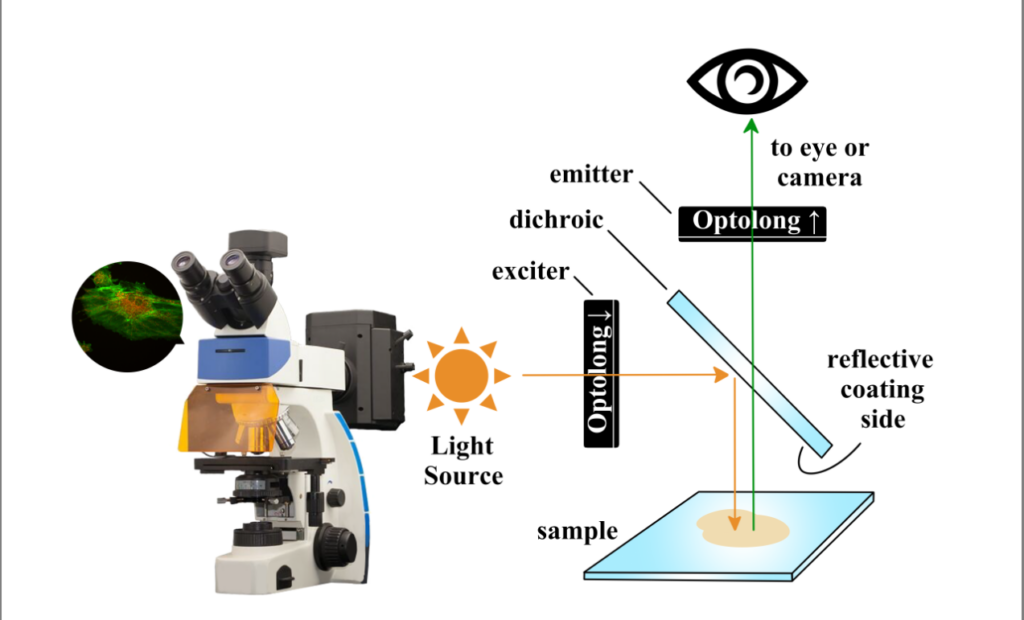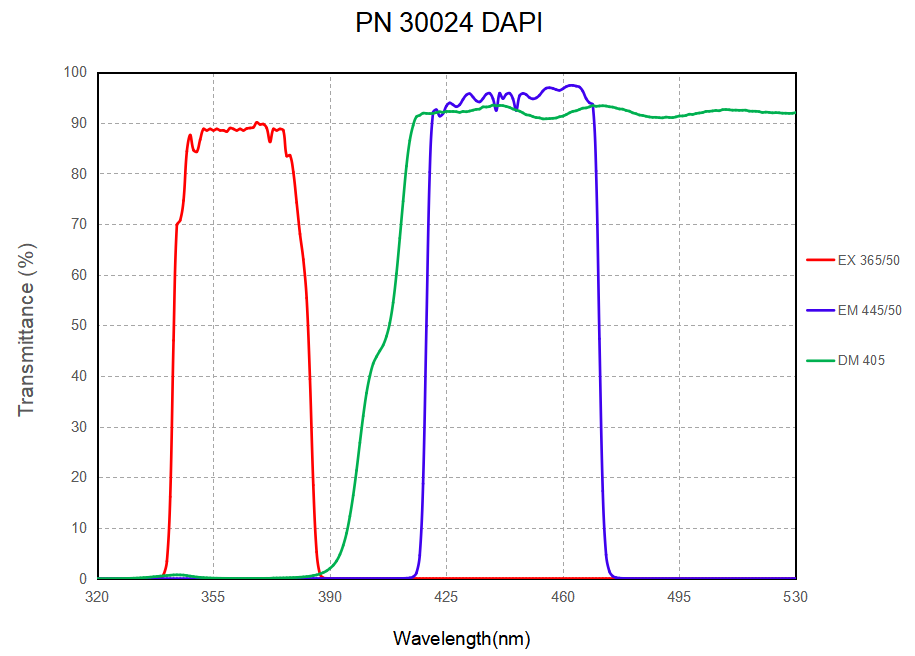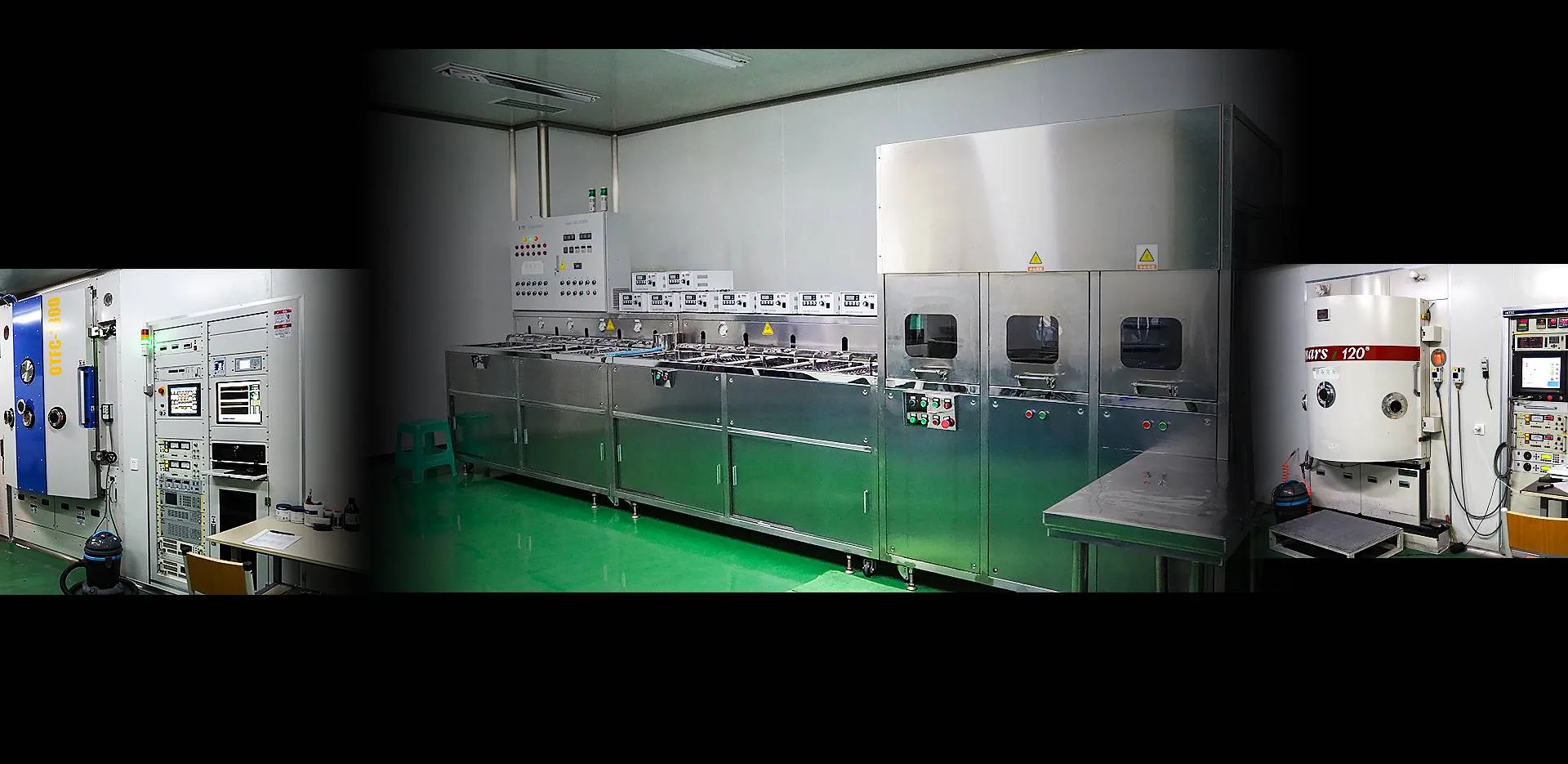Recently, some customers feedbacked that the filter is difficult to install. We take this opportunity to briefly understand the fluorescence filter sets, which include excitation filters, dichroic mirrors and emission filters. One filter each. In fact, it is really not difficult to install the filter correctly and use it normally. Do not believe? You can easily do it by referring to the following diagram:

Optolong‘s Exciter and Emitter filters have been placed in the black metal circle and have arrows to indicate the direction of installation:
The excitation filter arrows are directed away from the light source and toward the dichroic mirror.
The arrow direction of the emission filter faces away from the dichroic mirror and points towards the human eye or camera.
Of particular note are dichroic mirrors, which you will need to mount with the marked membrane facing towards the sample being observed to achieve maximum filter performance.
Having said that, let’s briefly review the basic performance of each filter in the fluorescence filter set:
Excitation filter that only allows a narrow band of wavelengths near the excitation wavelength peak to pass. As shown in the figure below, the excitation filter of DAPI fluorescent protein only allows the wavelength of 365±25nm to pass; the rest of the wavelengths far from the bandpass band are even completely blocked.

Dichroic mirrors are mainly used to reflect light with wavelengths less than the cut-off wavelength and transmit other wavelengths. In general, the cut-off wavelength of a dichroic mirror is the wavelength at which the transmittance is equal to 50%. In the figure above, the cut-off wavelength of the dichroic mirror (MD405) is about 405 nm, which both reflects wavelengths before 390 nm and transmits wavelengths after about 410 nm.
Thus, dichroic mirrors play a vital role in fluorescence microscopy, but are not ideal at blocking unwanted beams; typically, about 90% of light with wavelengths less than the cutoff wavelength is dichroic Mirror reflection, while light with wavelengths above this value is about 90% transmitted, resulting in a small amount of excitation light still transmitted through the dichroic mirror along with the excited fluorescence. Therefore, it is necessary to cooperate with the emission filter to achieve the observation effect.
The emission filter allows the fluorescence generated by the sample to reach the detection system for easy identification and observation by the human eye or equipment, and at the same time cuts off unnecessary excitation light. Similarly, emission filters only allow wavelengths near the peak fluorescence emission wavelengths to pass. The emission filter in the above figure only allows the wavelengths of 445±50nm to pass, and the rest of the wavelengths far from the bandpass band are completely blocked. So as to achieve the ideal observation effect of high transmittance, bright signal, deep cut-off background, dark background without cross color, etc.
